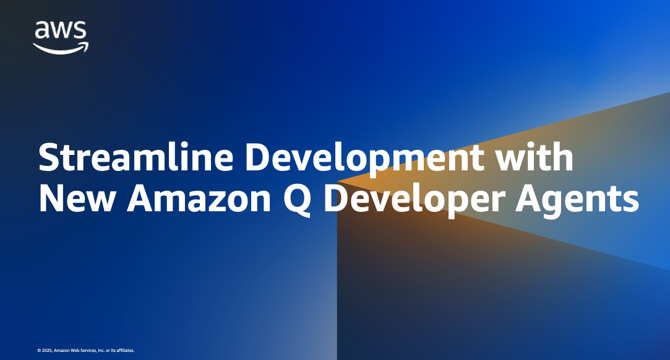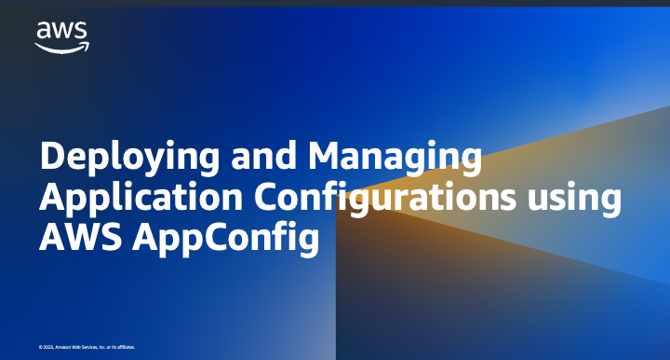Devops News
Solarwinds
376

Image Credit: Solarwinds
How to Scale Your Business with Hybrid IT
- Hybrid IT, a mix of on-premises and cloud infrastructure with SaaS solutions, is crucial for businesses aiming to streamline workflows amidst increasing complexities in IT environments.
- Key benefits of hybrid IT include scalability, adaptability to changing needs, and customization options while facing challenges of managing dynamic and intricate environments.
- Organizations can enhance scalability in hybrid IT by focusing on flexibility, total cost of ownership (TCO) optimization, and implementing Artificial Intelligence for IT Operations (AIOps) to boost efficiency.
- AIOps aids in proactive management, anomaly detection, and automation of routine tasks, leading to improved data analytics, operational efficiency, and productivity.
- Hybrid IT observability is essential for monitoring and optimizing environments, requiring comprehensive solutions for better visibility and management of the entire IT landscape.
- A roadmap for successful hybrid IT implementation includes evaluating current workflows, defining goals, selecting suitable SaaS and self-hosted solutions, embracing AIOps, and continuous monitoring and adaptation.
- Leveraging full-stack observability helps organizations scale, reduce costs, and stay competitive in the ever-evolving hybrid IT landscape, preparing for future opportunities and challenges.
- The strategy involves transitioning from conventional IT to a hybrid model, ensuring sustainable growth, operational efficiency, and alignment with evolving business objectives.
- This approach emphasizes the importance of careful planning, automation, and continuous improvement to navigate the complexities of hybrid IT effectively.
- Ultimately, hybrid IT enables organizations to optimize resources, increase agility, and stay ahead of the curve by leveraging a blend of on-premises and cloud solutions along with advanced technologies like AIOps.
Read Full Article
22 Likes
Medium
211

Image Credit: Medium
Google Cloud Architect Learning (Day 29)
- When designing for reliability, consider availability, durability, and scalability as key performance metrics.
- Availability can be improved by creating backup systems, using health checks, and monitoring services.
- Durability can be ensured by archiving data in multiple zones and regularly testing data restoration from backups.
- Scalability can be achieved by monitoring, autoscaling, and using standard or custom metrics for scaling.
Read Full Article
12 Likes
Javacodegeeks
215

Image Credit: Javacodegeeks
Agile and DevOps Integration: Maximizing Efficiency in Software Development
- Agile and DevOps integration maximizes efficiency in software development by combining iterative development, customer collaboration, automation, and continuous delivery.
- Key principles of Agile include iterative development, customer collaboration, adaptability, and continuous improvement, with popular frameworks like Scrum, Kanban, and Extreme Programming.
- DevOps bridges the gap between development and operations teams through automation, collaboration, continuous delivery, and monitoring, utilizing tools like Jenkins, Docker, Kubernetes, Prometheus, and Grafana.
- Agile focuses on delivering customer value quickly, while DevOps emphasizes reliable and fast releases, with differences in team structure, tools, timeframe, and scope.
- Combining Agile and DevOps accelerates time-to-market, enhances collaboration, ensures high software quality, offers flexibility, and optimizes end-to-end efficiency.
- Integrating Agile and DevOps involves aligning teams and goals, integrating CI/CD pipelines, automating testing, monitoring and iterating, and adopting Agile practices in operations.
- Best practices for combining Agile and DevOps include starting small, focusing on culture, investing in tools, measuring success, and continuously iterating and improving processes.
- The synergy between Agile and DevOps leads to faster delivery cycles, improved collaboration, and higher customer satisfaction, requiring a cultural shift, tool investment, and commitment to continuous improvement.
- Organizations can achieve a seamless workflow, maximize efficiency, improve collaboration, and deliver high-quality software at scale through the integration of Agile and DevOps, staying competitive in the software development landscape.
- The integration of Agile and DevOps offers benefits like faster delivery, greater flexibility, and enhanced customer satisfaction, making it a worthwhile investment for startups and enterprises.
Read Full Article
12 Likes
Dev
162

Image Credit: Dev
Infrastructure as Code (IaC): Why Every DevOps Team Needs It
- Infrastructure as Code (IaC) is revolutionizing how DevOps teams oversee and optimize their computing environments.
- IaC refers to the approach of managing and provisioning computing infrastructure through machine-readable scripts.
- Benefits of IaC for DevOps teams include consistency and reliability, speed and efficiency, improved collaboration, and cost optimization.
- Popular IaC tools include Terraform, Ansible, and Pulumi.
Read Full Article
10 Likes
Discover more
- Programming News
- Software News
- Web Design
- Open Source News
- Databases
- Cloud News
- Product Management News
- Operating Systems News
- Agile Methodology News
- Computer Engineering
- Startup News
- Cryptocurrency News
- Technology News
- Blockchain News
- Data Science News
- AR News
- Apple News
- Cyber Security News
- Leadership News
- Gaming News
- Automobiles News
Dev
91

Image Credit: Dev
How to Deploy Hugo With Cloudflare Pages
- Static Site Generators (SSGs) like Hugo create and deliver websites all at once for better performance and resource efficiency, with customization options and support for Markdown.
- Benefits of using SSGs include improved performance, customization freedom, resource efficiency, and Markdown support, while drawbacks may include a learning curve and a lack of default templates.
- Hugo is a popular choice for SSGs due to being written in Go, offering open-source options, and providing appealing themes like PaperMod for clean and simple designs.
- To set up a Hugo website with Cloudflare Pages, choose a theme, link a GitHub repository, customize the config.yaml file, and connect it to Cloudflare Pages by selecting Hugo as the framework.
- After connecting your repository to Cloudflare Pages, set up the Hugo version according to your theme requirements and deploy your website to have it live at a specified URL or custom domain.
- Regularly pushing changes to the master branch will trigger automatic rebuilds on Cloudflare Pages, simplifying the deployment process for blog creators and providing build logs for issue debugging.
- Embrace the world of static site generators and start your blogging journey with Hugo and Cloudflare Pages to enjoy efficient deployments and improved website performance.
- Remember, learning by teaching is a noble quest, so why not start your blog today and share your knowledge with others like the wise sages suggest.
Read Full Article
5 Likes
Dev
358

Image Credit: Dev
What is DevOps and How Does It Work?
- DevOps is a methodology where development and operations teams collaborate throughout the entire software lifecycle.
- The key objectives of DevOps are faster delivery, continuous deployment, and collaboration between Dev and Ops teams.
- The three key elements of successful DevOps implementation are a cultural shift, modern application design, and automation.
- DevOps is not just about Dev and Ops working together, creating a new team, or a set of tools; it requires a cultural transformation and a data-driven approach for success.
Read Full Article
7 Likes
Amazon
316

Image Credit: Amazon
AWS CloudFormation: 2024 Year in Review
- AWS CloudFormation in 2024 underwent several enhancements to accelerate the development cycle, simplify troubleshooting, and introduce new deployment safety features.
- Optimistic stabilization with the CONFIGURATION_COMPLETE event enabled up to 40% faster stack creation times.
- Introduced early validation checks to catch template errors before deployment, reducing manual steps required for a successful deployment.
- Enhanced deletion controls in May with a new DeletionMode parameter for better stack cleanup, especially for DELETE_FAILED state stacks.
- Introduced ServiceTimeout property for custom resources in June to set custom timeout values, improving development feedback loops.
- Launched integration with AWS CloudTrail in May for streamlined troubleshooting, providing direct links to relevant CloudTrail events.
- Deployment timeline view introduced in November for visualization of the stack operations sequence and resource provisioning.
- CloudFormation IaC Generator launched in February to simplify onboarding existing cloud resources to CloudFormation with over 600 AWS resource types support.
- Major enhancements to CloudFormation Hooks in November for proactive configuration controls, including stack and change set target invocation points and managed hooks for Guard Language and Lambda functions.
- Additional improvements included StackSets ListStackSetAutoDeploymentTargets API and CloudFormation Git sync with pull request workflow support.
Read Full Article
19 Likes
Dev
293

Image Credit: Dev
Commit Message Policy for Your Team
- Conventional Commits is a standardized way to write commit messages.
- To enforce this policy on your local machine, create a directory for Git hooks.
- Configure Git to use this directory.
- Create a commit-msg hook to check if commit messages follow the Conventional Commits specification.
Read Full Article
17 Likes
Dev
229

Image Credit: Dev
How I Turned Kubernetes Into a Fun, Kid-Friendly YouTube Short
- A creator recently used creative tools to simplify the complex concept of Kubernetes and create a kid-friendly YouTube short.
- The creator started by crafting a script that broke down Kubernetes into easy-to-understand, playful ideas.
- They then created appealing visuals for each scene and generated lively audio narration.
- Using Canva, the final video was assembled, resulting in an engaging YouTube upload that makes learning about Kubernetes fun.
Read Full Article
13 Likes
Medium
169

Image Credit: Medium
7 Critical Kubernetes Monitors & Fixes You Need Before Your Cluster Breaks!
- Kubernetes is a powerful but complex system that requires proper monitoring to prevent issues.
- Here are 7 critical Kubernetes monitors to ensure the health of your cluster.
- Node resource utilization monitoring helps identify high CPU, memory, or disk usage on nodes.
- Monitoring pod crashes and OOMKills can help detect and troubleshoot frequent restarts due to memory issues.
Read Full Article
10 Likes
Amazon
302

Image Credit: Amazon
Streamline Development with New Amazon Q Developer Agents
- Amazon Web Services (AWS) introduces new AI agents for Amazon Q Developer to streamline software development, enhancing documentation, testing, and code review processes.
- The AI agents - /doc, /test, and /review - are autonomous software programs that can independently perform tasks to optimize performance by making informed decisions based on data.
- The /dev agent in Q Developer helps generate code changes, from creating new API endpoints to optimizing database queries.
- With Amazon Q Developer, developers can enhance their productivity, reduce costs, improve decision-making, and enhance the customer experience.
- The /doc agent automates documentation generation by analyzing code to create new README files or recommend updates to existing documentation.
- The /test agent automates unit test generation, identifying test cases, producing test code, and integrating with popular IDEs like VS Code and JetBrains.
- The /review agent performs comprehensive code analysis, covering security vulnerabilities, secrets detection, infrastructure analysis, and software composition, enhancing code quality and security.
- By leveraging these AI-powered features, development teams can work more efficiently while maintaining high standards of code quality and security early in the development cycle.
- While the agents in Amazon Q Developer automate crucial tasks, they complement human expertise and serve as intelligent assistants to optimize project outcomes.
- Embracing these new features can empower development teams to focus on creating exceptional software and accelerate the software development process.
Read Full Article
18 Likes
Hackernoon
325

Image Credit: Hackernoon
The HackerNoon Newsletter: Heres How to Spot a Fake Crypto Trading Platform (2/17/2025)
- Crypto trading involves financial risks and there are fake crypto trading platforms making empty promises to victims.
- A new study reveals the best AI models for power grid optimization, evaluating accuracy, efficiency, and generalizability.
- AI's non-determinism, hallucinations, and its connection with cats are explored in an article discussing stochastic processes and self-correction.
- The importance of a devops approach to automating AEM packages, ensuring consistency, speed, reliability, and reducing manual effort, is highlighted.
Read Full Article
19 Likes
Dev
344

Image Credit: Dev
Why Mocks Fail: Real-Environment Testing for Microservices
- Mocks offer limited testing capabilities when it comes to real-world interactions and complex API behaviors.
- 'Shift left' approach combines mocking with real-environment testing for better results.
- Real-environment testing addresses the limitations of mocks but comes with challenges.
- Sandboxes offer a cost-effective and scalable solution for real-environment testing.
Read Full Article
20 Likes
Dev
192

Image Credit: Dev
How to Set Up a CI/CD Pipeline for Seamless Web App Deployment
- Continuous Integration and Continuous Deployment (CI/CD) streamline the development process by automating testing, building, and deployment.
- A CI/CD pipeline automates code integration, testing, and deployment in four key stages: Commit, Build, Test, and Deploy.
- This article provides step-by-step instructions on how to set up a CI/CD pipeline using GitHub Actions, GitLab CI/CD, and Jenkins.
- Best practices for CI/CD pipelines include running tests before deployment, using environment variables, enabling rollback mechanisms, and monitoring deployments with logs and alerts.
Read Full Article
11 Likes
Amazon
382

Image Credit: Amazon
Deploying and Managing Application Configurations using AWS AppConfig
- Managing configurations across various environments and tenants is a challenge in software development, addressed by AWS AppConfig for storing, managing, and deploying configurations.
- Integrating AWS AppConfig with CI/CD pipelines like GitLab streamlines configuration management for multi-environment and multi-tenant architectures.
- The setup includes multi-tenant configurations with separate dev and qa environments, exemplifying company divisions or distinct customers.
- Using templates for base configurations, AWS AppConfig ensures consistency and enables customization per tenant and environment.
- The hierarchical structure of directories organizes configurations for different environments and tenants with clear separation.
- The GitLab CI/CD pipeline creates applications, configuration profiles, and hosted configuration versions, ensuring familiarity, customization, and AWS AppConfig integration.
- The pipeline automates application and profile creation, checks for changes, and deploys configurations following specified AWS AppConfig deployment strategies.
- For cleanup, a script is provided to delete AWS AppConfig resources, emphasizing caution due to irreversible deletions.
- The integration of GitLab and AWS AppConfig streamlines configuration management, promoting automation, scalability, and reliability in application development.
- The synergy offers benefits like scalability, version control, and reduced manual errors, enabling faster development cycles and reliable applications.
Read Full Article
22 Likes
For uninterrupted reading, download the app